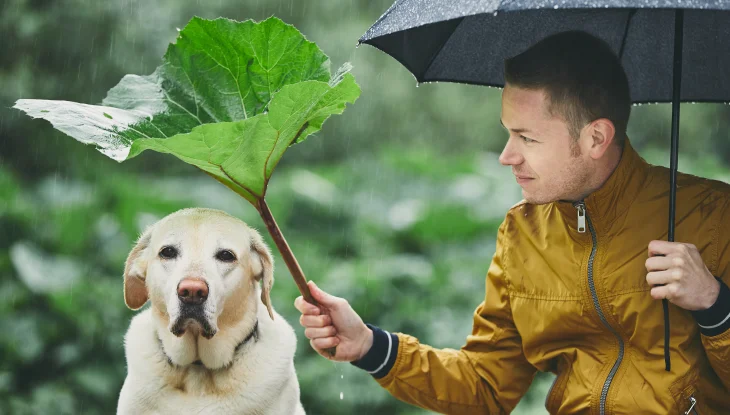How to Make Sure Spring Rains Don’t Damage Your Georgia Home
Georgia’s rain can be a challenge for Georgia homeowners, especially if they’ve caused damage. To get started with restoration, first inspect your property, remove standing water, and after drying your home take preventive steps to avoid future problems.
Read on for the 8 steps you can take to restore your home and prevent any further damage, as well as some of the most common questions clients have about cheap homeowners insurance and water damage!
1. Inspect Your Home for Water Damage
Water damage accumulates rapidly after exposure. Your priority should involve checking your property for all instances of water damage to estimate the repairs needed.
Look for moisture stains, damp areas, or signs of mold growth. You may see evidence of damage both in your home’s interior and outside on its exterior. Crucial areas to check include:
- Your roof, gutters, and other features like chimneys.
- Interior walls and ceilings, particularly in your attic (if applicable).
- Structural elements like wood and drywall.
Mold can build up quickly after water damage occurs, so you should see evidence of it within 24 hours.
2. Remove Standing Pools
Important: Before you begin removing standing water, turn off your home’s breaker box if it is dry and safe. If your breaker box has water exposure, call your power and water utility companies first for safety reasons. Consider hiring an electrician as well if you believe your breaker box has experienced moisture damage.
Start by removing any standing water that has accumulated in and around your home. Use a wet-dry vacuum or pump to get rid of excess liquid.
3. Dry Affected Areas and Belongings
Use fans and dehumidifiers to dry out any areas affected by water damage. Open windows and doors to improve air circulation.
If you have furnishings that have moisture damage, remove those items or consider throwing them out if they have mold. You can also put paper items like books in plastic bags in the freezer to quickly dry them.
For homes that have suffered from significant water accumulation, a sump pump may offer a more effective solution. A sump pump can remove water several inches deep.
Lastly, consider using desiccants such as calcium oxide to absorb any remaining moisture. This material can help to dry out closets and other hard-to-reach areas within a few days, but be sure to read the directions for proper use.
4. Check the Condition of Your Roof
Check your roof for any damage from the winter rains. Look for missing or broken shingles, leaks, or cracks. If you find any issues, hire a professional to repair them. In fact, this problem is one of the most common home insurance claims.
Experts recommend going through the following checklist when inspecting a roof:
- Remove piles of debris, including leaves and moss.
- Replace shingles that have become bent or buckled due to moisture.
- Consider replacing the entire roof if you observe substantial amounts of moisture damage due to poor ventilation.
5. Check Your Gutters for Debris
Make sure your gutters are free from debris and functioning properly. Clogged gutters can cause water to overflow and damage your home. You should also consider taking the following preventative maintenance steps:
- Periodically remove debris like leaves by hand and use a hose to flush out smaller pieces of waste.
- Ensure that the gutter remains securely fastened to the roof.
- If you notice holes and leaks, apply sealant or consider repairing the gutter with more permanent materials like fiberglass or aluminum.
6. Seal Leaks and Conduct Preventative Maintenance
Seal any gaps or leaks in your windows, doors, and walls. This will help prevent any future water damage. In humid climates like that of Georgia, you may also want to invest in a dehumidifier and adequately-sized air conditioning system to avoid mold and moisture issues. Combining a humid environment with inadequate homeowners insurance is a recipe for problems in the future!
- 7. Trim Any Overgrown Trees and Shrubs
- Trim any trees or shrubs around your home that may have been damaged by the winter rains. Cutting these plants can reduce the chance that they fall onto your roof and cause additional damage.
You may also want to consider landscaping features that can absorb water if you believe your basement is at risk of flooding during a storm. The most common plants for this purpose include daylily, globeflower, and primrose. You can also build swales or rainwater retention ponds.
8. Invest in Additional Waterproofing
If your home is prone to water problems, consider waterproofing your basement, foundation, or crawl space. Take the following steps to waterproof your home’s foundation:
- Excavate the land around the perimeter.
- Seal any cracks in the concrete and apply a waterproof membrane to the exterior.
These improvements may also increase the value of your property.

Common Questions about Homeowners Insurance and Water Damage
An ounce of prevention is worth a pound of cure. But sometimes, things just happen. You might have questions about how home insurance can protect you from water damage and flooding.
Below are two of the most frequent questions homeowners have about water coverage.
Do I Need Flood Insurance?
The southern portion of Georgia has a higher percentage of land in flood-risk areas. If you live in an area with a higher risk of flooding, you should consider investing in flood insurance.
Do Homeowners Insurance Plans Cover Mold Damage?
In some cases, yes. If mold buildup occurs suddenly, such as from burst pipes, you may have coverage. For slow buildup or rain-related issues, you may need additional insurance.
Learn More about Homeowners Insurance in Georgia Today
Velox Insurance can help you understand what type of homeowners policy makes sense for your unique needs. Give us a call today at 855-468-3569, or pay your local agent a visit. You can also get a .



